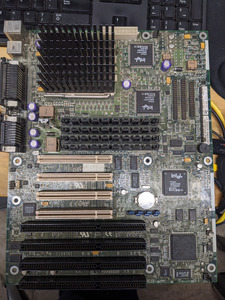First post, by moz2186
I have this board and it seems to have some issues with the onboard IDE and possibly the PCI/ISA slots. I am able to boot and run from a floppy (Gotek) and pass Memtest. I can run Speedsys just fine. Anything on the floppy.
The IDE I cannot get working, I recall having issues with drive detection before but now it's dead dead. When I plug a drive in, it shows both the primary and slave channels as connected, but does not see the disk on either. I tried manually inputting the CHS, no change. Disabled channels, no change. Different cables (40 and 80 pin), different drives, no changes.
I suspect the IDE channels and/or related chips are somehow damaged from perhaps a reversed cable at some point. Curious if anyone has diagnosed a similar issue and knows which chip(s) to look to first.
Thanks!
